At the foot of the mountain is celebrity-status car-free Zermatt, one of Europe’s most highly desirable ski resorts and the base for exploring the Matterhorn. You don’t need to be a mountaineer to experience the pulling power of the mountain; anyone can access it irrespective of skill or energy level.
The Matterhorn has commanded obsessive behavior since the 1850s when British climbers visited Switzerland to take on the Swiss Alps. With the help of skilled local guides, peaks were swiftly conquered until only one remained: the Matterhorn – an invincible Holy Grail, a haunted mountain created by a folkloric giant who tripped and knocked over the wall of rocks protecting the warm green valley from the icy North wind. Milk stopped flowing in streams, snow fell and the rubble of rock left became known as the Matterhorn.
It took eight attempts by English mountaineer Edward Whymper to conquer the Matterhorn. Even then, his victorious ascent on 14 July 1865 ended in tragedy. Four climbers in his party plunged to their death after a rope snapped on the descent. Open-air theatre in Zermatt in July 2015 will recreate the high-altitude drama to mark its 150th anniversary.
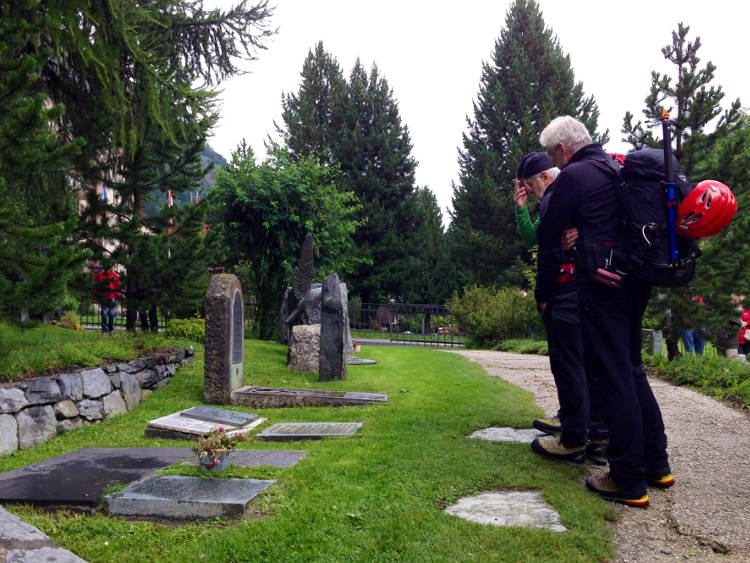
In Zermatt town, the Matterhorn Museum does a grand job of telling the story of the Matterhorn and the farming village that grew up at its feet, connected only by mule track to the Visp Valley below until 1891 when the railway arrived. The museum’s 19th-century village of larch wood chalets and granaries – built on stilts to keep the rats out – has bags of atmosphere, and clips of Luis Trenker’s 1937 film Der Berg ruft (The Mountain Calls) dramatise the race between Whymper and Italian climber Jean-Antoine Carrel to reach the summit of the Matterhorn. Oh, and you can view the famous snapped rope.
A walk around the church graveyard is a chilling reminder of the killer the Matterhorn is. Gravestones evoke the shattered dream of mountaineers from all over the world who have died on Zermatt’s gargantuan mountains.
Revive exhausted spirits with a drink in historic Monte Rosa , the hotel where Whymper and his climbing cronies stayed when in town.
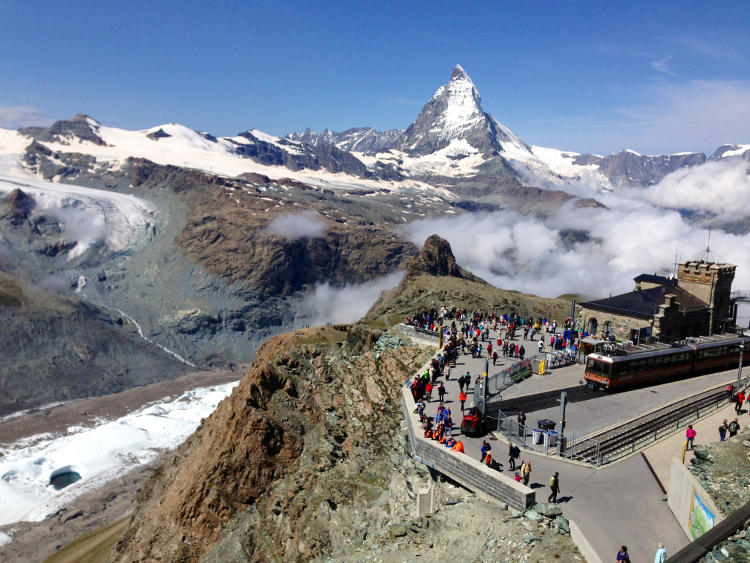
Thank the Lord you don’t need to be a mountaineer to scale Zermatt’s epic peaks. Europe’s highest cogwheel railway Gornergratbahn has clawed its way up to Gornergrat (3089m) since 1898. Sit on the right-hand side of the train (face uphill unless you have thigh muscles of steel) to photograph the Matterhorn. No lens truly captures what awaits spellbound passengers: an intoxicating panorama of seven glaciers beneath a 180-degree sweep of 29 peaks over 4000m.
Zermatt’s other hotshot ride is the Matterhorn Glacier Paradise up to Europe’s highest cable-car station on the Klein Matterhorn (3883m). Views are snow-white and glacial, and while ice sculptures in the kitsch Ice Palace and free snow-tubing are entertaining, skiers and others accustomed to mountainous environs might regret the return fare.
The symmetrical postcard view of the Matterhorn from Rothorn (3103m) – take the Sunnegga Express from Zermatt – is exquisite. Watching the summer sun rise here at dawn or skiing the last run down to Zermatt as the winter sun slips seductively behind the Matterhorn is heaven on earth.
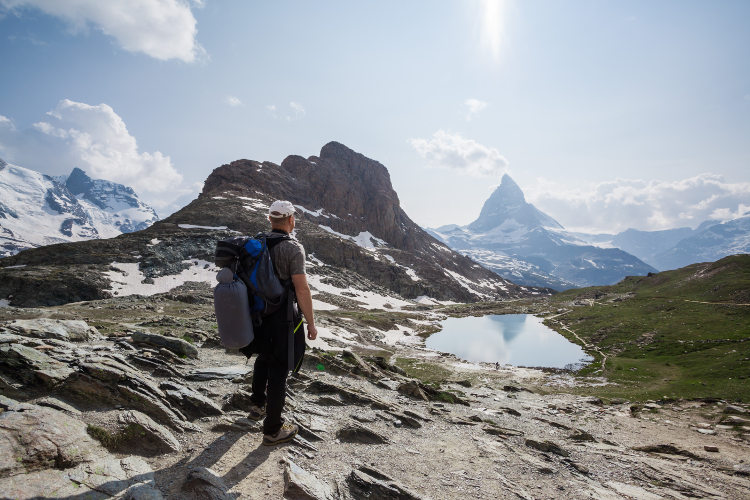
Loads of trails, no crampons required, embrace Matterhorn views. But nothing beats the summer mirage of the Matterhorn rising above its mirror reflection on the emerald surface of Riffelsee (2757m) – best early morning or evening when the least amount of breeze ripples the lake. Riffelsee is a kid-easy 10-minute walk from Gornergratbahn’s Rotenboden train station or 30 minutes downhill from Gornergrat top station.
For big bold Matterhorn views packed with mountain menace, hike the Matterhorn Glacier Trail (6.5km) from Trockener Steg, mid-station of the Matterhorn Glacier Paradise. The walk is a scramble across a surreal moonscape of glacier-sculpted ice, scree and rock, but the God-like Matterhorn is always exhilaratingly close, demanding to be worshipped.
Every ski run on Rothorn venerates the Matterhorn. From the top of the Matterhorn Glacier Paradise cable car, it’s a 13km cruise back down to Zermatt: for epic Matterhorn close-ups take red pistes Matterhorn (number 69) and Stafelalp (number 52). You won’t get closer.
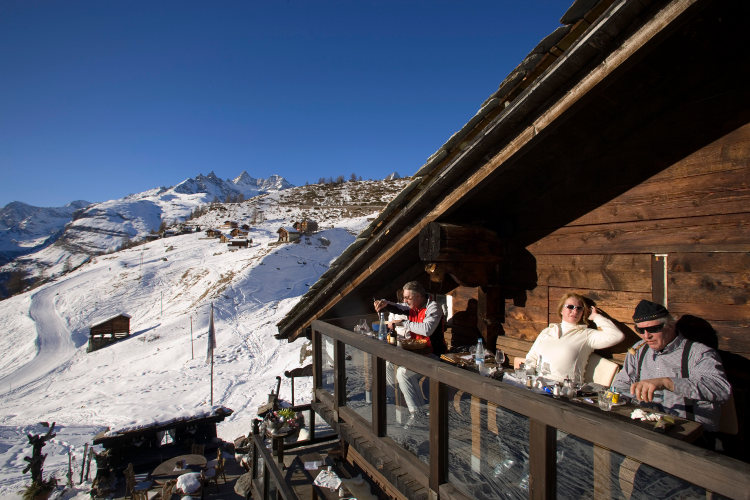
Feast on more than Matterhorn views at Chez Vrony, in old-world hamlet Findeln. Take the Sunnegga Express to 2288m then ski down blue piste number 6 or summer hike 15 minutes downhill to this enchanting address with potted eidelweiss on each table, rugs to snuggle in and organic Swiss cuisine. If you can’t get a lunch reservation, go for a shared dessert platter mid-afternoon.
Another stunner is Findlerhof , a sun-burnt wooden farmhouse 15 minutes downhill from Vrony, squirreled away just beyond Findeln’s whitewashed chapel. Traditional Swiss cuisine, exceptional wine and a sun-blazed terrace staring at you know what is pure gold.
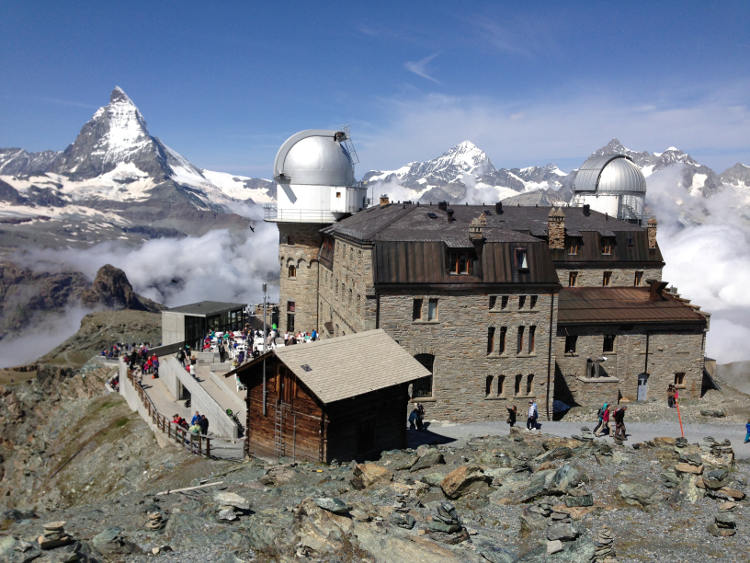
Views are panoramic and glacial at Kulmhotel Gornergrat, Switzerland’s highest hotel at 3100m. Be it star-gazing, ibex-spotting or Matterhorn-ogling at sunrise or full moon, this hotel is never as bewitching as when the Gornergratbahn crowd has left for the day.
In 1855 mountaineers set off to conquer Switzerland’s highest peak, Dufourspitze (or Monte Rosa), from Hotel Riffelberg, an alpine mansion with cherry-red shutters lower down the Gornergrat railway line at 2500m. A drink on the sun terrace with Matterhorn full-frontal is the stuff of Swiss dreams.
Every room has Matterhorn views at Riffelalp Resort , around since 1884. Dive into the Matterhorn-facing pool at 2222m, splash out and exercise that insatiable idolatry the iconic peak requires.
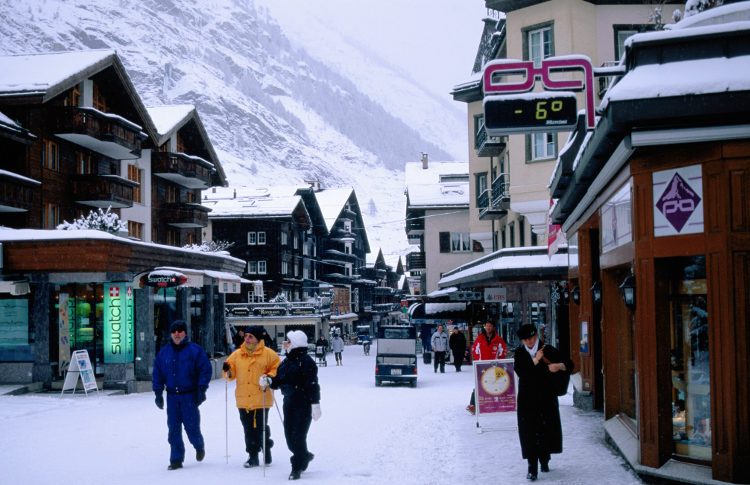
Sleep: The Matterhorn is the only respectable view to have and this being super-efficient Switzerland, there are rooms with a view for every budget. Zermatt Youth Hostel is cheap as Swiss chips with dorms and bathroom-clad doubles, but only four-bed rooms with shared bath stare at Zermatt’s famous mountain. Hotel Bahnhof is brilliant value with five-star budget dorms, doubles and family rooms. For a midrange, flowery chalet experience, Chesa Valese is the answer.
Eat: Breakfast on nutty Bergführerbrot, chocolate Matterhorns and sweet views of the Gornergrat train chugging up and down the mountain at the Getwingstrasse branch of Fuchs bakery . Whymper Stube cooks up cheese and meat fondues in a traditional chalet interior. The hip crowd gathers for post-mountain drinks and creative, barbecue-sizzled burgers at riverside Snowboat .
Drink: Brown Cow Pub and Papperla Pub compete for ‘Buzziest Bar’ award. Snowboat gets a nod for its stylish roof terrace with canary-yellow deckchairs, as does Z’alt Hischi for late-night tipples in an ancient wooden chalet on legs. With sophisticated candlelit booths and film-reel chandeliers, Vernissage at Backstage Hotel is the ultimate après-ski spot.
When to go: Zermatt is best visited in May to mid-October when temperatures are milder, cable cars and lifts function, and hiking trails accessible. December to April is fabulous for snow-sport fiends, but snow-covered streets and below-zero temperatures can be hard work for non-skiers.
Getting there: Zermatt is car-free. Motorists park in Täsch and ride the Zermatt shuttle train (12 minutes) the last 5km up to Zermatt. Regular SBB trains link Täsch with Zürich and Geneva airports; check schedules at www.sbb.ch.